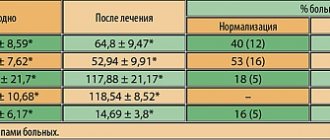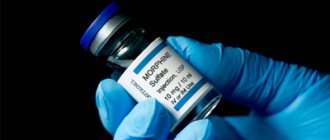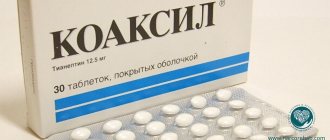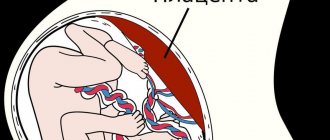- General information
- Historical facts
- Effect on the body
- How long do drug addicts live?
- How long does it stay in the body?
- Tests for Ketamine
- Analogs
- How to recognize a drug addict
- Overdose and how to recognize it
- What to do
- How to speed up elimination at home
- Detoxification in hospital
- Rehabilitation
- Coding
- Why not at home or on an outpatient basis?
- Working with codependents and resocialization
- How to quit on your own
Attention! Drug use causes irreparable harm to health and poses a danger to life!
General information
Ketamine is a potent drug that is used to provide non-inhalational anesthesia. It has proven itself in surgical practice, as it does not depress breathing and does not require the connection of an artificial lung ventilation device. This allows urgent operations to be performed without intubating the patient.
Due to the fact that the effect of ketamine persists after anesthesia, in surgical practice it is gradually being replaced by other drugs with less narcotic influence. The drug is still used for anesthesia in the CIS countries and in veterinary practice around the world.
The main mechanism of action is stimulation of NMDA receptors. In simple words, the drug “disconnects” the body from the brain, inhibits reflexes and sensitivity, and leads to a distortion of reality with a negative perception of the world.
There is evidence that the drug is able to potentiate a person’s mood and feelings. That is, if a person is angry, then after taking Ketamine, he will become even more angry and aggressive. This is dangerous, as it immediately causes strong emotional dependence and can lead to an overdose.
The medicine is released in the following forms:
- powder;
- pills;
- injection.
Drug addicts use Ketamine intranasally and orally and parenterally. The intensity of the effect and its duration depend on the route of administration.
There is evidence that Ketamine can affect the centers responsible for pain memory, pain perception and pain-modulating functions.
Taken from: KETAMINE AND POSTOPERATIVE PAIN, OR A NEW LOOK AT AN OLD DRUG (ANALYTICAL REVIEW). Author Ovechkin A.M.
Ketamine has no specific color or odor. Because of this, the drug is added to drinks in order to “disable” the victim. This drug is sometimes called a rapist's drug.
About the drug
Ketamine is a powerful analgesic that is commonly used as an anesthetic drug. It has a pronounced analgesic effect. Allows a person to maintain spontaneous breathing during surgical interventions in order to avoid being connected to a ventilator (artificial lung ventilation).
In therapeutic doses it is low toxic. Used for the following indications:
- Short-term surgical or diagnostic procedures in adults and children.
- Induction of anesthesia, its maintenance.
- As part of a combined anesthetic treatment.
- Anesthesia for severely ill patients during transportation.
- Painful manipulation, especially for patients with extensive burns.
- Emergency operations for victims in very serious condition - traumatic shock, massive blood loss.
- Emergency surgical interventions in the field.
Somewhat less frequently, the drug is used to dilate the bronchi during severe exacerbation of bronchial asthma or to eliminate seizures in people with status epilepticus. Research is being conducted on the use of ketamine isomers (esketamine) in the treatment of treatment-resistant depression. Main forms of release: injection solution in ampoules, tablets, powder.
Historical facts
Ketamine was synthesized in the 60s of the 20th century. It had fewer side effects than the opiates and anesthetics (Pheniclidine) that were used at the time. Ketamine did not cause severe hallucinations or deplete the brain. Therefore, it began to be used for premedication as anesthesia for small-scale operations on humans and in veterinary medicine.
Since the 80s, after an increase in the amount of information about psychotropic substances in Russia, Ketamine began to be actively used for the treatment of alcoholism. This went on for almost 20 years. But after overdose deaths from this drug began to rise around the world, it was banned from sale in Russia.
In the 90s, when there was a demand for psychoactive substances among drug addicts and the market was empty, drug dealers began to actively introduce Ketamine in powder form. There was no particular demand, since most of the hallucinations were of a negative nature, and the state after taking Ketamine is described as stressful.
After the ban on Ketamine, veterinarians began to have problems due to the inability to administer anesthesia during operations on animals. Those who did this illegally were prosecuted and received real sentences.
Now veterinarians can obtain a license to use Ketamine as a non-alternative drug. But this often leads to the drug being distributed through veterinarians.
Composition of the drug
The medication is available in the form of a solution. The release of the drug is strictly controlled.
The source of ketamine on the shadow market is a factory product processed in a special way in clandestine laboratories.
“Street” ketamine is presented in the form of a solution (of varying concentrations) or a light powder.
To enhance the narcotic effect, ketamine is used in combination with alcohol and other drugs.
Commercial ketamine powder often contains many impurities. Sometimes these are relatively harmless substances, such as talc, powdered sugar, but more often they are paracetamol and cleaning products. The composition of the powder is inconsistent; sometimes the product contains very little ketamine, which, with severe craving, can cause an overdose.
Effect on the body
Ketamine can be called a toggle switch that switches the flow of information in the brain. All nerve impulses that go to the spinal cord from the skin, arms, legs, and internal organs do not reach the cerebral cortex and cannot be analyzed. This all happens against the background of depression of the nervous system. The result is that a person understands everything that is happening around him, but cannot control his body or coordinate his movements.
As the dose increases, significant changes occur in the functioning of synapses in the brain and spinal cord. A person breathes independently, looks, and can swallow saliva. According to external signs, nothing happens to such a person, but in reality he does not control any processes in the body, except for the flow of his thoughts.
The effect of the drug begins 10-20 minutes after intranasal or oral administration and lasts 1-2 hours. When administered by injection, the effect begins immediately and lasts 30-45 minutes. The drug causes the following systemic effects:
- depression of reflexes (except cough, corneal, swallowing);
- stimulation of the limbic system;
- disruption of impulse transmission in the reticular formation;
- the appearance of nystagmus;
- increased oxygen consumption by the brain and heart;
- increased blood and intracranial pressure;
- increased heart rate and body temperature;
- development of pulmonary hypertension;
- inhibition of nociceptors until complete anesthesia;
- disorientation;
- increased intraocular pressure, diplopia;
- disruption of all senses;
- decreased ability to remember;
- development of retrograde amnesia.
At small doses, Ketamine causes numbness of the limbs, hearing and vision impairment. The drug may give a false feeling of carelessness and relaxation.
People who have used Ketamine describe experiencing a change in the way they think. Thoughts become different, more primitive. Sometimes it is difficult to grasp the train of thought or to “direct” it yourself.
The drug is addictive, even if the effects are unsatisfactory for the addict. Each time the dose needs to be increased. And given that the drug is metabolized in the liver, it has a strong hepatotoxic effect.
By disrupting perception, the drug can cause stool or urinary incontinence. The principle of operation of the receptors in the bladder and rectum is the same as that of pain receptors. If they are suppressed, a person will not feel when he needs to go to the toilet. Therefore, the act of urination or fecal excretion can occur independently, after the bladder or rectum is full. This greatly affects the ability of the sphincters to retain body fluids and can cause urinary incontinence and stool even after drug withdrawal.
Consequences of long-term use
Systematic use of ketamine causes severe consequences in all organs and systems of the body:
- myocardial dystrophy;
- severe forms of arrhythmia;
- acute left ventricular failure;
- papillary renal necrosis;
- ketamine ulcerative cystitis (accompanied by hematuria and urinary incontinence);
- toxic hepatitis;
- acute pancreatitis;
- emotional lability;
- poor coordination of movements, frequent injuries;
- increased intracranial pressure;
- overdose;
- death.
As a result of laboratory studies (conducted on rats), the direct neurotoxicity of ketamine was revealed, with the formation of vacuoles (Olney's lesions) in the brain tissue.
How long do drug addicts live?
The main cause of death is overdose. It arises due to the fact that with each new use tolerance arises and the desired effect for the addict passes faster and weaker. In addition, allergic reactions, myocardial infarction, and stroke can be causes of death.
Because the patient does not feel pain, he may harm himself without knowing it. For example, take something hot in your hand and get a severe burn. Due to impaired coordination and spatial perception, falls often occur, which lead to traumatic brain injuries.
There are very few drug addicts who take only Ketamine in isolation. The average life expectancy of ketamine addicts does not exceed 5 years. This takes into account the fact that after 3-4 months of active use of the drug, irreversible changes are formed in the cerebral cortex. So-called empty brain fields arise, due to which a person may never return to the ability to think normally and quickly.
Get help now
Do any of your relatives or friends have an addiction? Have you tried in every possible way to help, but as a result the person still returned to his past life?
You are not the first to encounter this problem, and we can help you.
We guarantee anonymity, we will persuade you to undergo treatment, and we will help you choose a center.
Call us
+7
or
Call me
Signs of a drug addict
The first signs of drug addiction appear after 3-4 weeks of regular use. You can suspect that a person is taking ketamine based on the following signs:
- coordination of movements is impaired;
- unfocused, unblinking gaze, with a normal pupil size;
- speech is slow, drawling;
- pain sensitivity is reduced;
- anger, rudeness, mood swings.
However, the final conclusion about whether a person is addicted to ketamine can only be given by a narcologist after an appropriate examination.
How long does it stay in the body?
Ketamine is broken down by liver enzymes and then excreted in the urine through the kidneys. Removing the drug from the body takes from 12 to 36 hours. But metabolites of the drug remain in the blood.
Unlike the active substance, the metabolites of the drug can remain in the blood for up to 7 days. Each subsequent metabolite of the drug has a weakened effect compared to the previous substance. Because of this, it is more difficult to find the drug in the body on days 5-7. In people who chronically use Ketamine, drug metabolites can remain in the body for up to 2 months.
How long does the drug last in different environments of the body:
- in urine up to 7 days;
- in the blood for 3-4 days;
- in hair and nails for up to 3 months (no exact information).
Due to the low prevalence of the drug, there are few test systems for Ketamine. Studies on its accumulation in hair and nails have also not been conducted.
Removal
Ketamine is highly lipophilic. Quickly penetrating the blood-brain barrier into the brain structures, the drug blocks NMDA receptors in the brain. The main reason for the rapid cessation of the central action of ketamine is the rapid redistribution of the drug from the brain to other tissues.
Metabolism of ketamine occurs in the liver under the action of liver enzymes. The main metabolite of ketamine is norketamine, its narcotic effect is much weaker than that of ketamine. Ketamine is excreted through the kidneys in the urine. There is no accumulation of the drug even with repeated use.
How long does it stay in the blood?
Ketamine quickly breaks down in the liver into low-active and inactive metabolites under the action of enzymes. The half-life of ketamine from the blood is 2-3 hours.
How long does it stay in urine?
In urine, the maximum level of ketamine is recorded within 2 hours after the last injection of the drug into the body. And traces of ketamine can be detected within 3 days.
How long does it stay in saliva?
There have been no separate studies on the levels of ketamine in saliva.
How long does it stay in hair?
Traces of ketamine can be detected in hair for up to 90 days.
How to speed up elimination from the body (at home)
You can try to speed up the removal of ketamine from the body only after a single dose of the drug, in the absence of pathology from the kidneys and heart. Otherwise, attempts will be not only useless, but also dangerous.
To speed up the removal of ketamine from the body, you need to:
- strengthen the drinking regime;
- increase physical activity;
- eat properly and in a timely manner;
- exclude coffee, strong tea, alcohol;
- Ensure a restful night's sleep at least 8 hours a day.
Detoxification in hospital
The nephrotoxicity of ketamine does not allow the use of forced diuresis during detoxification. A large load on the kidneys can lead to acute renal failure.
The basis of inpatient detoxification for ketamine poisoning is extracorporeal hardware detoxification.
Widely used:
- hemodialysis - filtration of blood through special membranes on which toxic substances are retained;
- plasmapheresis - removal of part of the blood with toxins from the systemic circulation and replacing it with physical. solution.
Plasmapheresis allows you to cleanse the blood of toxins of any molecular weight, while hemodialysis is effective only against toxins with low molecular weight.
Tests for Ketamine
There are 2 options for determining Ketamine in the body: using a rapid test and laboratory testing of blood or urine.
The first option has no legal force. That is, if such a test is carried out, it will not be possible to accuse a person of using drugs (from a legal point of view). This is because the immunochromatographic assay technique may malfunction if the test is not stored or used correctly.
When used correctly, rapid tests give 99% correct results. But they only reveal the fact of use. With their help, it is impossible to determine the amount of drug used, the time of use and the approximate length of service of the drug addict.
The second method, laboratory, has legal force, since it uses more accurate methods. It is impossible to cheat such a test for Ketamine, unless you replace the biological fluid that is taken for analysis.
The laboratory analysis is based on the methods of chromatography-mass spectrometry, gas-liquid spectrometry and chromatography. If such an analysis gives a positive result, it is always reliable and can be used in judicial and criminal practice.
To conduct a rapid test, you can buy simple test tablets or a specific strip only for detecting Ketamine. It is better to buy tablets to detect 5-10 drugs. This will allow you to immediately determine the presence of other substances in the body. As practice shows, drug addicts who use pharmaceutical drugs always take other drugs.
The price of a test for Ketamine is 80-150 rubles. The price of a test tablet for several substances can cost 50-100 rubles more. You can buy such systems on the Internet or in a pharmacy.
Ketamine can enhance the effect of opioid analgesics. This allows you to combine these drugs to achieve a more pronounced analgesic effect.
Taken from: KETAMINE AND POSTOPERATIVE PAIN, OR A NEW LOOK AT AN OLD DRUG (ANALYTICAL REVIEW). Author Ovechkin A.M.
Danger of consumption methods
There are several ways to administer ketamine for recreational purposes:
- Intranasal – involves inhaling the drug through the nose; the method is the most popular among addicts and is considered the least dangerous (the single dose is small), the effect occurs in 5-10 minutes and lasts more than an hour. Long-term use of ketamine in this way leads to hyperplasia of the nasal mucosa and can result in cancer.
- Parenteral administration of the drug: both intramuscular and intravenous administration are possible. When administered intramuscularly, the narcotic effect is most striking; it occurs 1-2 minutes after the injection and is accompanied by acute pain at the injection site. When used intravenously, the effect occurs almost instantly. Injection methods are dangerous due to infection (HIV, hepatitis, sepsis) and a high risk of overdose.
- Oral route: the narcotic effect is weak, so it is rarely used.
Analogs
There are three variations of Ketamine: tablets, powder and ampoules. All these substances have the same name, they have the same effect on the patient. The very first drug with a similar effect was Phencyclidine.
PCP had many adverse reactions and caused severe hallucinations. Because of this, the formula for Ketamine was developed, which is still used in medicine today.
There are no substances with a similar effect among narcotic drugs or pharmaceutical preparations.
Drugs that contain Ketamine:
- Ketamine Panpharma;
- Calypsol;
- Velonarkon;
- Ketelar.
Recently, it has become increasingly difficult to find drugs, as their use in surgical and traumatology practice is decreasing and being replaced by less toxic substances.
Effect of taking one dose:
- hallucinations;
- reduction of pain sensitivity;
- loss of control over time;
- constricted pupils and gaze;
- slurred speech;
- shortness of breath at rest, difficulty breathing, tachycardia;
- numbness of the limbs, loss of coordination;
- hyperirritability, excitability, aggressive behavior.
Biochemical dependence develops quickly, and very soon receptor resistance to small doses of the drug occurs. Therefore, a person is increasingly forced to take the drug in large dosages to achieve the desired feeling of high.
How to recognize a drug addict
To suspect a person of abuse, it is enough to see changes in his condition. Either he is sluggish with incoherent speech, or irritable, taciturn and angry. These are two conditions that are common to all drug addicts. The first state occurs during the action of the drug, the second - during the period of abstinence (the end of the drug's effect).
It is difficult to determine exactly whether a person has used Ketamine or another CNS depressant drug, since the external manifestations are very uniform. Medicine boxes, ampoules, and bottles can give you an idea of what product was used.
After the drug wears off, the person will want to feel the drug intoxication again. Without a dose, he will be angry, rude, looking for money for a new portion. In this state, he will easily deceive those closest to him, steal money, and take valuables out of the house.
Sooner or later it ends in an overdose with possible death. You need to seek help as soon as you suspect that a person is abusing pharmaceutical drugs.
Drug interactions
The drug enhances the effect of narcotic analgesics, neuroleptics, drugs for general anesthesia, anxiolytics (tranquilizers) and other drugs that depress the central nervous system.
Combination with anxiolytics and antipsychotics weakens the cardiac stimulating effect of ketamine.
The use of ketamine is possible only 1-2 days after stopping lithium, lincomycin, and 15 days after stopping taking monoamine oxidase inhibitors.
The drug solution cannot be mixed with barbiturates in the same syringe.
Ketamine does not affect the effect of suxamethonium and pancuronium, and enhances the muscle relaxant effect of ditilin and tubocurarine.
The simultaneous use of droperidol, sibazone and other benzodiazepines reduces the risk of developing arterial hypertension, tachycardia, and the occurrence of motor and psychomimetic activity.
Since the simultaneous use of ketamine with drugs that have a stimulating effect on the cardiovascular system and sympathomimetics leads to increased arrhythmogenic and hypertensive effects and increased myocardial oxygen demand, it is recommended to avoid these combinations.
Patients taking thyroid hormones and iodine-containing drugs are at greater risk of tachycardia and increased blood pressure during general anesthesia.
Overdose and how to recognize it
Ketamine overdose occurs due to the development of tolerance. This means that with each subsequent dose the expected effect will be lower, and to achieve the desired effect it is necessary to increase the dose.
In this case, the person begins to increase the dose by 2, 3, 5 or more times. As a result, drug intoxication does not occur, and the liver, heart, kidneys and other organs suffer from drug intoxication. Ketamine overdose can cause death. The main symptoms of overdose are:
- respiratory arrest;
- spasm of the bronchi and upper respiratory tract;
- disruption of the heart (ventricular arrhythmias);
- loss of consciousness;
- vomit;
- incoherent speech or lack thereof;
- convulsions.
It is unrealistic to understand at first glance that the poisoning occurred precisely with Ketamine. Therefore, they provide assistance according to the standard algorithm of actions.
After using the drug, people become inhibited, ataxia and disorientation develop. They don't understand where they are. They may say that they teleport or hear God. They often describe someone talking to them. A condition similar to oneiric.
Taken from a scientific article: Tiganov A.S. (ed.) ‹‹Exogenous mental disorders››
What to do
First of all, make sure that you are not in danger. Then call an ambulance and start providing self-help. Turn the patient on their side to prevent them from choking on their own vomit if they vomit.
If the person is conscious, his stomach can be flushed using a tube or by drinking a large amount of liquid and then inducing a gag reflex. This can be done by pressing two fingers on the root of the tongue. Sometimes even normal vomiting without drinking a lot of liquid brings relief. Please note that gastric lavage is only necessary in cases of oral drug use.
If the drug was administered by injection, but the patient is intoxicated, the stomach must also be rinsed. This will eliminate additional ethanol toxicity and reduce symptoms of CNS depression.
Patients are given sorbents in the form of activated carbon, silicon dioxide or smecta. If possible, infusion therapy is performed in a hospital. There is no specific antidote to Ketamine.
Ketamine, instructions for use: method and dosage
Ketamine in ampoules and vials is used by intravenous fractional, simultaneous jet, drip or intramuscular administration.
For adults, the dose of the drug is prescribed at the rate of: 2-3 mg for intravenous administration or 4-8 mg per 1 kg of patient weight for intramuscular administration.
The recommended dosage for maintaining anesthesia for intravenous administration is 0.5-1 mg or for intramuscular administration - 3 mg per 1 kg of weight. The drug can be administered intravenously using an infusion pump at a rate of 2 mg per 1 kg per 1 hour or an infusion system with the introduction of a 0.1% ketamine solution prepared with a 5% dextrose solution (glucose) or 0.9% sodium chloride solution , infusion rate 20-50 drops per minute.
In children, induction of anesthesia with combined anesthesia is carried out after appropriate premedication by a single intramuscular injection of a dose of the drug at the rate of 4-5 mg per 1 kg of child weight in the form of a 5% solution.
During basic anesthesia, ketamine is administered intramuscularly in the form of a 5% solution or intravenously at a dose of 2-3 mg per 1 kg of weight - simultaneously in a stream (1% solution) or drip (0.1% solution) at a speed of 50 -60 drops per minute.
Dosage for intramuscular administration depends on the age and weight of the child:
- Infants under 1 year - at the rate of 8-12 mg per 1 kg;
- Children 1-6 years old – 6-10 mg per 1 kg;
- Adolescents 7-14 years old - 4-8 mg per 1 kg.
General anesthesia is maintained with repeated injections of the drug at a dose: IM - at the rate of 3-5 mg per 1 kg or IV (stream or drip) - 0.5-1 mg per 1 kg, infusion rate 0.1% solution of the drug 30-60 drops per minute.
The effect of Ketamine is increased by combination with antipsychotics (droperidol) and fentanyl, promedol and other analgesics; with this combination, it is recommended to reduce the dose of the drug.
How to speed up elimination at home
Small doses of the drug are eliminated using forced diuresis. This is done by drinking plenty of water from 2 to 4 liters per day with the additional administration of diuretics. If diuretics are not prescribed, there will also be a positive effect.
The second way to accelerate elimination is dosed activity. There is no need to run or swim, just walk 10-12 thousand steps a day. This will speed up metabolic processes in the body and, thereby, the elimination of the drug.
Going to the sauna is not advisable. Ketamine disrupts the natural regulation of processes in the body: blood pressure rises, heart rate increases, and reactions become slower. Violations will not allow the body to adapt to temperature changes, and therefore the sauna can harm, and not speed up elimination.
If the dose was large, then it is impossible to speed up elimination and maintain the patient’s homeostasis at home. It is necessary to seek help from specialists.
Release form and composition
Dosage form – solution for intramuscular (IM) and intravenous (IV) administration: colorless or slightly colored transparent liquid (2 ml and 5 ml in ampoules or 5 ml in bottles, 5 pcs. in a blister pack , in a cardboard box 1 or 2 packages and instructions for use of Ketamine).
The active ingredient is ketamine hydrochloride, 57.6 mg in 1 ml of solution, which is equivalent to 50 mg of ketamine.
Auxiliary components: sodium chloride, benzethonium chloride, water for injection.
Detoxification in hospital
The advantage of inpatient detoxification is that additional symptomatic therapy can be prescribed, blood counts can be monitored and corrected in time. In case of exacerbation of withdrawal syndrome, timely assistance can be provided and a person’s life can be saved.
In a hospital setting, proper detoxification includes:
- Massive infusion therapy with forced diuresis. Loop diuretics, 5% glucose and saline are used. If a person is exhausted, rheopolyglucin and amino acids can be infused intravenously.
- Hemodialysis or plasmapheresis. An excellent method for quickly clearing the blood of the drug and its metabolites. But there is a risk of contracting hepatitis or HIV infection.
- Symptomatic therapy. Prescribed drugs that correct the functioning of organs: hepatoprotectors, nootropics and others.
In a hospital setting, in case of cardiac dysfunction, antiarrhythmic drugs, medications for high blood pressure and blood thickening can be used. This is important because many deaths from Ketamine poisoning occur due to cardiac dysfunction.
Harm from drugs
Ketamine is one of the most powerful dissociatives, which determines its negative effect on the human body:
- from the cardiac system - an increase in the activity of the adrenergic nervous system causes palpitations, arrhythmia, hypertension, cardiac ischemia, an increase in pressure in the pulmonary circulation;
- from the digestive system – loss of appetite, anorexia, nausea, vomiting, hypersalivation;
- from the urological system - direct toxic effect of ketamine and its metabolites on the kidneys, a decrease in the volume of the bladder, hyperplasia and hypertrophy of its walls, dilation of the ureters, perifocal inflammation is observed;
- from the liver - cholestatic damage to the organ such as cholangitis, increased enzymatic activity;
- from the peripheral nervous system - disorders of tactile and pain sensitivity, impaired coordination of movements, diplopia, nystagmus, tunnel vision, speech retardation.
- from the central nervous system - memory impairment, both short-term and long-term, hallucinations, disorientation, development of addiction, organic disorder of the brain structure.
Professional call center
Our consultants have gone through the school of addiction, they know everything about treatment, why breakdowns happen, and how relatives should behave. We provide psychological services if necessary
8
Free consultation 24/7. Call or leave a request
Rehabilitation
Rehabilitation for ketamine addiction should take place in a hospital. This drug causes rapid mental and physical dependence. While in withdrawal, it is very difficult for the patient to do without a new dose.
Recovery and treatment for addiction should only be comprehensive. This means that rehabilitation occurs not only medicinally, but psychologically. The patient needs to undergo daily psychological therapy. He must receive new regulations, register a new character and desires.
Each patient goes through stages of purification, psychological preparation, and at the end he must resocialize. In addition, it is imperative to work with codependent people. They are the key to long-term remission without breakdowns.
Drug therapy includes drugs to normalize the functioning of the heart and liver. If necessary, a consultation with specialized specialists is scheduled. The first 3 weeks of recovery are the most difficult, as the patient develops severe withdrawal symptoms. This may lead to depression, which requires treatment.
It is very difficult to provide all this at home, and as a result, breakdowns often occur. If possible, you should always undergo treatment in a specialized clinic.
Withdrawal and withdrawal
The dissociative effects of the anesthetic last no longer than 30-60 minutes. Aftereffect (“withdrawal”) – 1-4 hours, rarely up to a day. At the exit, consciousness gradually returns, but the muscles remain flaccid and poorly controlled (“rubbery”). Disorientation, psycho-emotional instability, and headache are possible for several hours.
Withdrawal symptoms are also variable, and the clinical picture may include the following symptoms:
- gastrointestinal disorders;
- sleep disturbances, often insomnia;
- apathy or, conversely, psychomotor agitation;
- weakness;
- muscle and headaches;
- Bad mood;
- reluctance to see others;
- ignoring important life situations;
- aggressive, antisocial behavior.
Abstinence lasts on average up to 10 days. During this period, the patient needs to stay in a medical facility, since suicide attempts are not excluded. A rare variant of “withdrawal” is a type of recurrent psychosis.
When ketamine is abused, AS develops after 4-7 months of systematic use. The recovery from withdrawal syndrome is characterized by a moderately expressed astheno-apathetic state (depletion of facial reactions, lack of expressiveness and completeness of motor acts). An obstacle to drug use causes dysphoric reactions. In general, the emotional background is close to apathetic. Patients are laconic, stereotypic statements are typical, and they answer questions after a long pause. In this state they can be aggressive and perform primitive protest actions.
Federal clinical guidelines for the diagnosis and treatment of withdrawal syndrome. year 2014.
Why not at home or on an outpatient basis?
In addition to the fact that at home there is a greater risk of failure, it is not always possible to provide timely assistance on an outpatient basis. Patients with Ketamine addiction require long-term symptomatic treatment.
At home, the patient can continue to communicate with his friends who actively use drugs. This leads to a breakdown. And most importantly, it is not always possible to provide psychological assistance on an outpatient basis. All this leads to the fact that treatment for drug addiction at home or on an outpatient basis is less effective compared to inpatient therapy.
Ketamine Addiction Treatment
Ketamine is a fairly rare drug that is more often used by adolescents and young men.
How addiction is formed (stages)
There are three stages in the development of substance abuse:
1. Stage of formation of mental dependence. It develops rapidly: after 2-3 weeks of regular use of the drug, the user begins to feel that everything that previously brought pleasure (sports, various hobbies) now becomes boring and uninteresting, only ketamine and the sensations it causes can brighten up existence. The first tolerance to the drug appears, but it is expressed not by increasing the dose, but by increasing the frequency of taking the drug. The clinical picture of drug intoxication is also changing: frightening experiences disappear or are significantly smoothed out, hallucinations become fragmentary. Already at this stage the following are noted:
- memory impairment;
- difficulty concentrating;
- lethargy, passivity;
- conflict.
The first functional disorders appear:
- tendency towards hypertension;
- tachycardia;
- persistent white dermographism;
- weight loss.
2. Stage of physical dependence. After 10-12 months of regular use of ketamine, tolerance to the drug increases sharply, the user increases the dose and frequency of administration. At this time, they often switch to parenteral administration of ketamine. Upon examination, the following is revealed:
- general lethargy;
- slow, unsteady gait;
- slow, monotonous speech;
- disorientation in time and space.
When the drug is discontinued, a clinical withdrawal syndrome appears.
3. Stage of decompensation. After 1-2 years, ketamine abuse leads to toxic damage to the central nervous system, with the formation of a psychoorganic disorder. Patients experience:
- memory impairment for current events;
- inability to remember and reproduce information;
- inability to learn and use previous knowledge.
After 3-4 years of ketamine abuse in patients, along with somatic pathology, severe central nervous system disorders appear, represented by an apathetic form of dementia:
- criticism of one’s condition is significantly reduced;
- severe memory impairment.
How long do drug addicts live?
The average lifespan for ketamine addiction is 5-10 years. The main causes of death are:
- drug overdose;
- severe multiple organ pathology;
- severe injuries;
- severe infections caused by parenteral drug administration.
To prevent such an outcome of the disease, it is necessary to begin treatment for drug addiction as early as possible. Therapy should be carried out in a hospital setting, in stages.
The first step in addiction treatment is detoxification. Doctors strive to rid the body of the drug and its metabolites as quickly and effectively as possible. Treatment of diseases caused by ketamine use is carried out. Only after the patient’s somatic condition has normalized, he is transferred to the next stage - rehabilitation.
Rehabilitation
Rehabilitation is the longest and most difficult stage of addiction treatment; is carried out according to an individual program developed separately for each patient. The psychotherapist, first of all, must identify the reason why the addict decided to stop taking the drug, and then throughout the treatment, strengthen and strengthen this motivation in the patient’s mind. If there is no such motivation, as is often the case with teenagers, try to unobtrusively create it.
When working with patients, the psychotherapist uses individual conversations, group sessions, and uses various psychological techniques and trainings. The task of psychological rehabilitation is considered completed if the patient completely sincerely and voluntarily decides to stop taking the drug and take responsibility for his health. The patient must realize that addiction is a chronic disease and requires constant attention.
Why you can’t treat yourself at home
Treatment of ketamine addiction can be most fully and effectively carried out only in a hospital setting:
- Detoxification for ketamine addiction is most effectively and safely carried out using hardware methods. It is impossible to carry it out in full at home.
- Effective rehabilitation is possible only with constant monitoring of the patient’s psychological state.
- Ketamine causes damage to many somatic systems and organs, long-term and qualified treatment of which is only possible in an inpatient setting.
- In a hospital setting, the patient does not have access to the drug.
Working with codependents
Often, not only patients of a drug treatment clinic, but also their relatives need the help of a psychologist. The patient’s relatives not only suffer from chronic depression, but they develop a special pathological pattern of behavior called codependency, when the addict and his pathological addiction are at the center of the life of the entire family.
When working with codependents, a psychologist should:
bring the patient's relatives out of a state of chronic depression;
remove their feelings of guilt and inferiority;
explain to them the essence of their loved one’s illness;
teach relatives how to properly communicate with the convalescent.
Resocialization
Resocialization is the last stage of rehabilitation treatment. The goal of this stage is the most painless return of the convalescent to society. It is very important that the patient himself takes part in this process. At this stage, not only psychotherapists, but also social workers work with the patient.
The patient is helped to find a new job or place of study, and, if necessary, undergo retraining. A psychologist helps restore and strengthen family relationships. Much attention is paid to the problem of free time and changing the circle of friends.
Ambulatory treatment
After discharge from hospital, the risk of relapse of the disease is especially high. This is why it is so important to immediately visit an outpatient psychotherapist. The doctor will help to cope with the life difficulties that arise in the convalescent without resorting to the help of drugs. Participation in various anti-relapse programs will help change your social circle and cope with the problem of free time.
Working with codependents and resocialization
Classes with codependent people are as important in treatment as personal psychotherapy for the patient. After discharge from a medical institution, they will either be a stronghold of long-term remission, or the cause of a breakdown. Therefore, the task is to teach codependent people the correct behavior with the patient. They need to know how to eliminate conflicts at the stage of their origin and what to do in certain situations. For codependent people, special behavioral scenarios are prescribed that can be used in standard situations when communicating with a person who has undergone rehabilitation.
After discharge from the clinic, patients must find themselves in life. Without a new type of activity, they become depressed and begin to use again: either the same drugs as before treatment, or new ones. This is the reason that the patient should have a job or hobby after discharge. Even being infatuated with another person can become a means of preventing a breakdown.
The more the patient communicates with other people, the more he feels needed. This is the basis for preventing a new breakdown.
Contraindications
- Myocardial infarction (including the period of the last 6 months);
- Arterial hypertension and other pathologies for which increased blood pressure is contraindicated;
- Angina;
- Severe renal failure;
- Cerebrovascular accident (including history);
- Epilepsy and other diseases that occur with convulsive activity;
- Alcoholism;
- Preeclampsia and eclampsia;
- Pregnancy and breastfeeding period;
- Hypersensitivity to the components of the drug.
Ketamine anesthesia is used with caution in cases of decompensated chronic heart failure or when performing surgery on the pharynx or larynx.
How to quit on your own
It's more difficult than quitting drinking or smoking. Dependence is formed at the physical level. Therefore, only strong-willed people can stop using Ketamine on their own.
First of all, it is necessary to stop communicating with those who are still active drug addicts. No matter what substances or drugs he uses, this person is not your friend. Such people always provoke a new breakdown and prevent you from returning to normal life.
You should be prepared for the fact that within 3 or 4 weeks you will have a strong desire to use again. So strong that without a new dose, pain or depression will appear. All this time you must fight addiction. You should have food prepared for several weeks in advance, you should only leave the house when absolutely necessary, otherwise you may be tempted to buy a new dose.
Always look for something to distract yourself. To do this, use hobbies, travel, TV series, films, etc. Anything that can help you forget about the drug is your savior. If you decide to quit, you need to do it right away, right now. Excuses and promises for the future never help yourself. If you decide, act immediately.









